Reducing Emissions on Farm
Reducing on-farm emissions is a complex task, so we’ve broken it down into 6 steps.
search for tools
Reducing on-farm emissions is a complex task, so we’ve broken it down into 6 steps.
Baseline your farm using a calculator designed for your commodity.
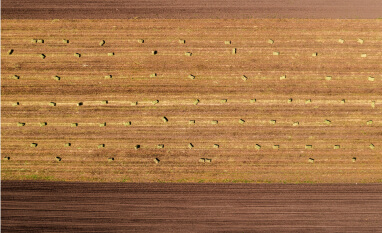

Use the information from your carbon baseline to identify the different sources of emissions on your farm and how much each source contributes to the total.
This will vary by region, commodity type and farming system.
For example: Dairy Australia found that ‘average’ dairy farm emissions look likethis:
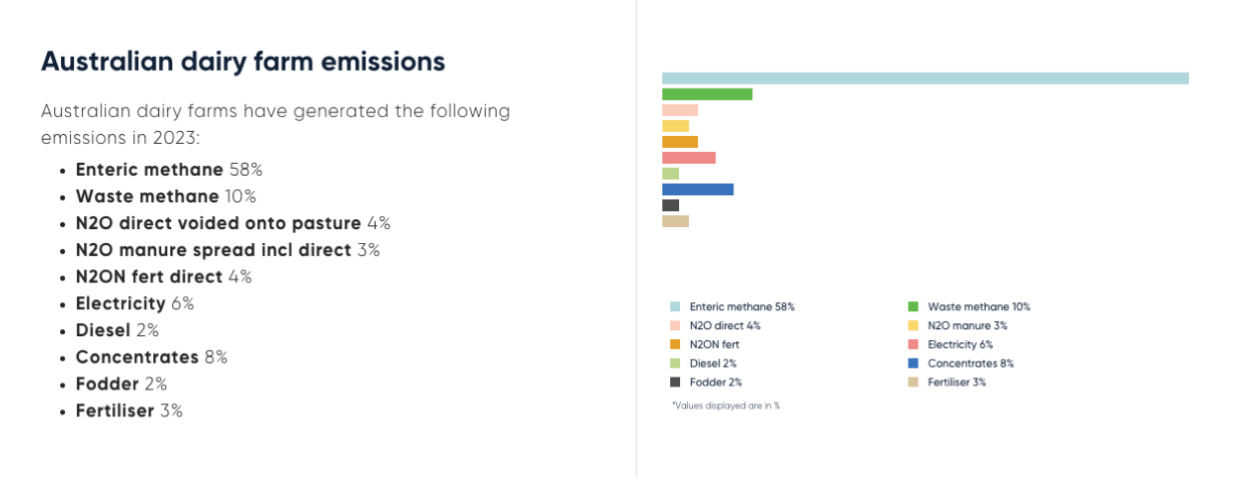
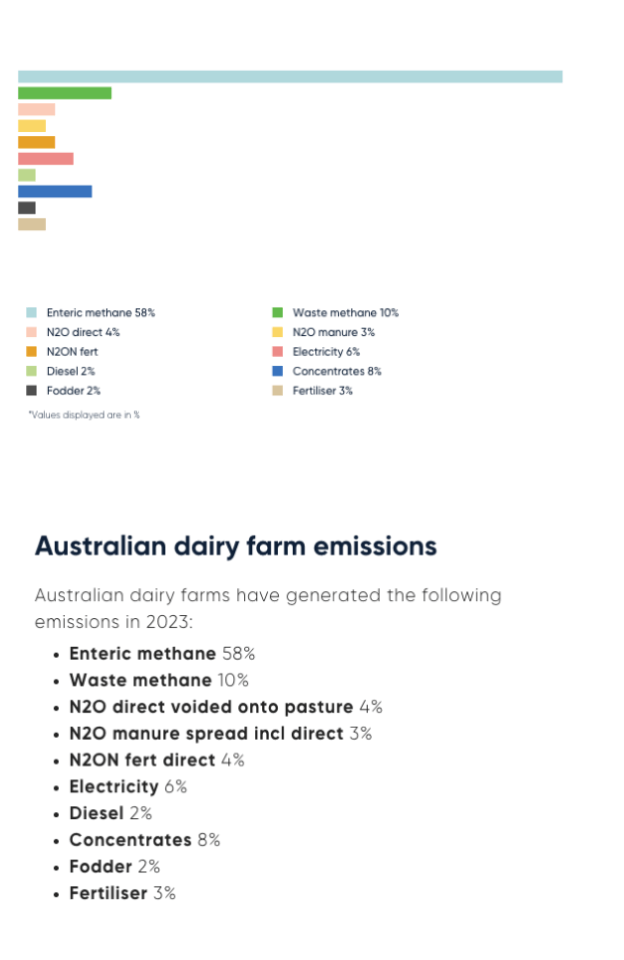
Each of these sources of emissions will have different solutions for reduction, so working out the relative percentages of emissions is a good starting point to see where the opportunities lie.
Use the links below to investigate and consider cost vs impact of options, including the
payback period and potential productivity impacts. These could include things like:
These opportunities will be specific to commodity and farming systems.
Once you’ve identified the emissions reductions opportunities on your farm, you can consider setting a target with timeframes for achievement. It’s worth speaking to your value chain partners at this stage – they might have their own targets and requirements for Scope 3 emissions that can help inform yours.
Other, more general resources are available through trustworthy organisations,including your state agriculture department;
In most cases, the commodity Research & Development Councils (RDCs) have set sector targets for emissions reduction and developed tools to help farmers to achieve them. See:
Many states and territories offer rebates and incentives to undertake work on farms.
An up-to-date list of opportunities is kept by FarmTable.
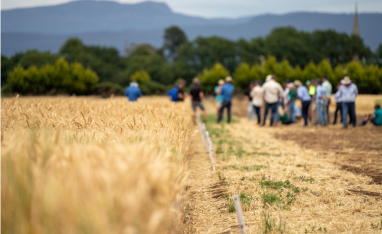

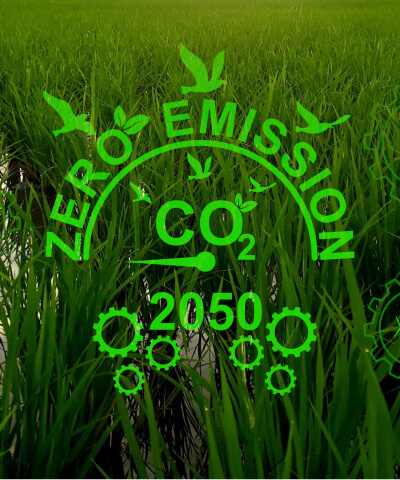
The Carbon Markets can provide guidance on this option.
FCA has created a number of webinars that you might find helpful. Explore our webinars below.
This toolkit isn’t exhaustive and FCA will be adding more resources over time – if you know of another great resource that should be added please send in your suggestions to [email protected] with subject “CSFT Suggestion”.
 Back to toolkit
Back to toolkit